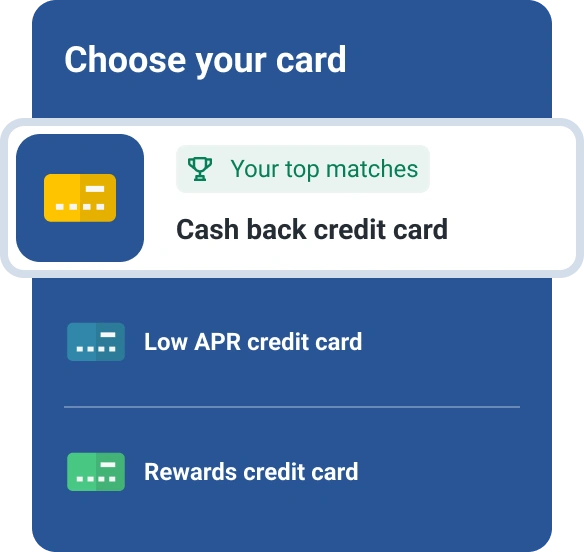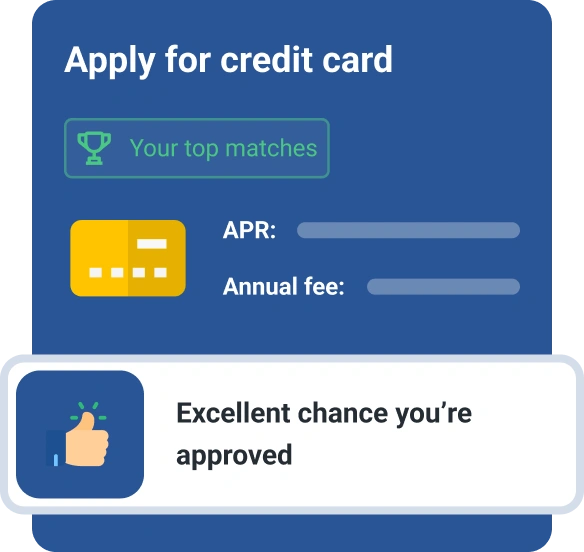How Do Fed Interest Rate Cuts Impact Credit Cards?
Quick Answer
When the Fed reduces interest rates, credit card issuers also lower rates on cards with variable APRs. Exact timing varies, but many card issuers will update the APR within a month or two.

When the Federal Reserve lowers the federal funds rate, credit card issuers typically follow suit. With multiple Fed rate cuts expected in 2024, that means reduced rates on your credit cards could be just around the corner.
Consumers in the United States collectively have over $1 trillion in outstanding credit card debt, according to Experian data, and lower credit card rates may bring much-needed financial relief to many credit card holders. To help you decide the best approach to your finances, let's explore how federal funds rate influences credit cards and steps you can take if your interest rate decreases.
How Fed Rate Cuts Affect Credit Card APRs
The federal funds rate, the interest rate banks charge when they lend money to each other overnight, is set by the Federal Open Market Committee (FOMC).
How the Fed Sets Interest Rates
The FOMC—a committee within the Federal Reserve—meets a few times each year to decide whether to adjust the federal funds rate. Their decisions hinge on the state of the economy: If inflation is high, for instance, the FOMC may hike the target federal funds rate in an attempt to take some demand out of the economy and slow inflation.
The Federal Funds Rate and the Prime Rate
Banks consider the federal funds rate when deciding the prime rate, which is charged to their most creditworthy customers. The prime rate is usually 3% higher than the federal funds rate. For example, if the federal funds target rate is 5.25% to 5.50%, the prime rate would be 8.50%.
How Variable Credit Card Rates Work
Most credit cards have a variable annual percentage rate (APR), made up of a fixed rate added to an index. The index is often linked to an interest rate related to the federal funds rate, like the prime rate. Credit card issuers often reference the prime rate published by the Wall Street Journal on a certain date, such as the last day of the previous month, as a reference point.
Rate Changes and Your Credit Card
If the prime rate decreases when your card issuer updates rates, your credit card rate might also go down. Timing varies: Some rates change within a month, while others may take a bit longer to adjust. Check your credit card agreement to learn how your issuer determines the interest rate and when it changes.
Steps to Take When Credit Card APRs Decrease
Lower credit card APRs offer an opportunity to improve your finances. Here are some steps you can take if your rate drops.
- Pay your balance down sooner. A lower interest rate means more of your payment goes toward lowering the total balance rather than interest. Increase your payment to knock out your balance quicker. If you have balances on multiple credit cards, focusing on the card with the highest interest rate will offer the most savings.
- Shop for a new credit card. Since your credit card rate is assigned based on your creditworthiness at the time you applied, you may qualify for a lower interest rate, especially if you've improved your credit.
- Ask for a lower interest rate. Alternatively, you can contact your current card issuers to request a lower interest rate. With an improved credit score and a pattern of making on-time payments, you may be more likely to receive a lower rate.
- Reassess your budget. Adjust your budget to reflect changes to your credit card payments if, for instance, you're making lower payments or you've paid off a balance due to lower rates. This gives you an opportunity to see how much flexibility you have in your budget now that you're spending less on credit card payments.
- Save for emergencies. Use the money you're saving on credit card payments to boost your emergency fund. With money in savings, you're less likely to rely on credit cards the next time you face an unexpected expense.
Ways to Pay Off Your Credit Card Debt Faster
If you're committed to paying off your credit card debt, here are some strategies to pay off your debt quickly.
Debt Snowball Method
With the debt snowball approach, you pay off your credit cards by making lump-sum payments on the smallest balance and minimum payments on all your other credit cards. As you pay off each balance, you focus on the next smallest balance, and so on. This approach keeps you motivated since you're paying off accounts quickly in the beginning.
Debt Avalanche Method
The debt avalanche method is similar except that you focus on the highest interest rate balance first. This approach allows you to pay off your debt and save money on interest.
Balance Transfer Credit Card
With a good credit score, you may be able to consolidate your credit card balances with a 0% intro APR balance transfer credit card. If you're approved, you'll get a temporary break on interest on the balances you transfer.
Debt Consolidation Loan
By combining your credit card balances with a debt consolidation loan, you can pay off your debt with a fixed monthly payment and repayment schedule. In some cases, you'll have a lower monthly payment, but higher long-term interest may be the trade-off.
Cut Back on Discretionary Spending
Reducing your spending frees up money that you can put towards paying your credit card balances. Review your current spending to spot places you can cut back.
The Bottom Line
When the Fed lowers interest rates, you'll likely see a drop in your credit card APR too, though it won't be right away. Take advantage of the lower rate by paying down your credit card balance or shopping around for a new credit card. To get started, check your credit report and credit score to see where you stand so you can focus on credit cards that fit your credit profile.
Don’t apply blindly
Apply for credit cards confidently with personalized offers based on your credit profile. Get started with your FICO® Score for free.
See your offersAbout the author
LaToya Irby is a personal finance writer who works with consumer media outlets to help people navigate their money and credit. She’s been published and quoted extensively in USA Today, U.S. News and World Report, myFICO, Investopedia, The Balance and more.
Read more from LaToya

